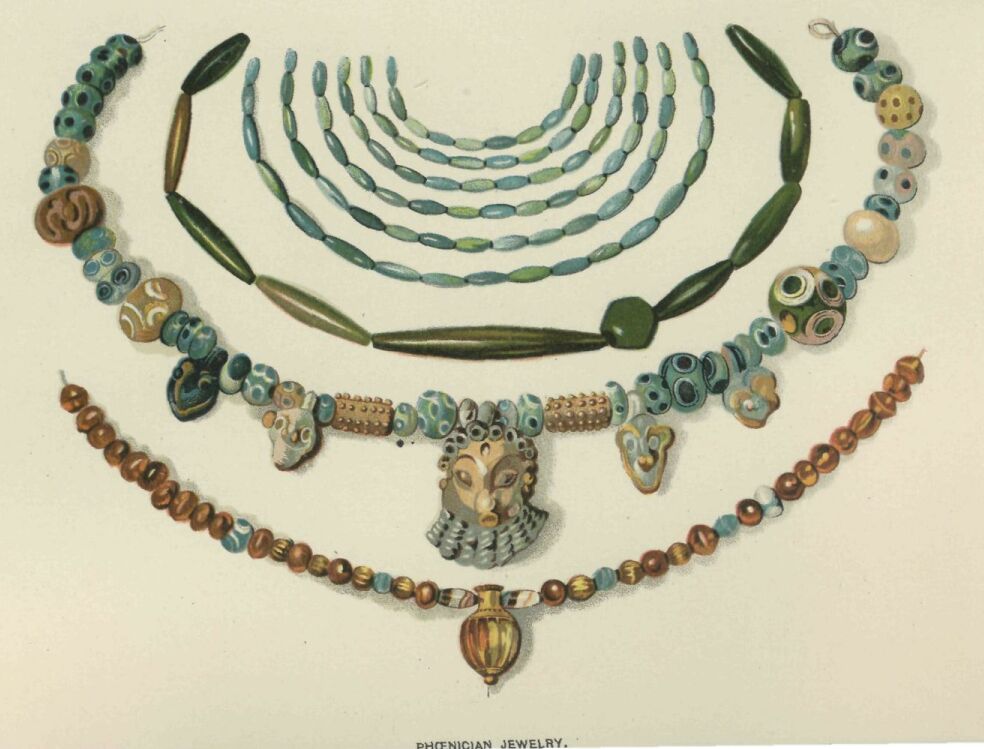Phoenician jewelry
The Phoenicians were famous in antiquity for her artwork in more jewelry as well as ivory, glass, clay, wood, stone, and weaving. Skilled seafarers and traders, the Phoenicians managed to "borrow" the art and cooking processes of many people with whom they had contact in their trade routes.

Craftsmen Phoenicians were concerned more with the visual part than stylistic. The art produced was not only commercial purposes, but also religious and, in addition to visual impact, sought to convey ideas and concepts.
Most objects Phoenicians who came to our days, as well as other civilizations have disappeared, archaeological sites belonging to a funerary context, as tombs, temples and cemeteries. In the ancient Phoenician tombs ever discovered were found in gold jewelry, silver and gems, scarabs and other symbolic or religious objects made of glass or clay bowls, metal (gold, silver and bronze) and also in terra-cotta, beautiful boxes decorated in ivory, cosmetics and other items that denote social status of the occupant of the tomb. A huge amount of these objects have small size. Objects decorated wooden or woven items are very rare in archaeological sites Phoenicians, being, however documented in many writings that were discovered, they were about trade between Phoenician traders and other people.
The trade was the major factor expansion of Phoenician art. Around 1000 BC, Phoenician goods could be found in various and distant parts of the Mediterranean Sea and influenced cultures like the Greek, Etruscan, the Assyrian people and those from North Africa and the Iberian Peninsula.
Few archaeological sites of ancient Phoenician (now part of Lebanon) have been properly excavated, such as Sarafand. The most significant archaeological finds came from Phoenician colonies or trading posts located in Spain, Sardinia, Sicily and Tunisia. Most of these objects date between II and VII centuries BC, but were also found parts located between the ninth and VIII AC.
The Phoenician art was conservative by nature. Thus, designs and motifs were repeated for centuries. It can be assumed that eclecticism is the very hallmark of Phoenician art, as agreed, so unusual, various decorative patterns and designs from different cultures, without regard to religious symbols, for example.
Craftsmen Phoenicians used with skill elements Egyptians, Greeks, Assyrians and others in their artistic designs, colors and designs chosen for the combination of styles and decorative motifs. Sometimes simply copied styles from other cultures without changing them, which in some archaeological finds was hard to recognize what was authentic in a particular culture that was "backed" Phoenician.Like it on Facebook, Tweet it or share this article on other bookmarking websites.

